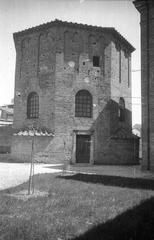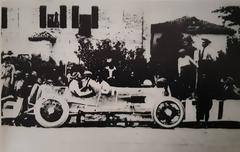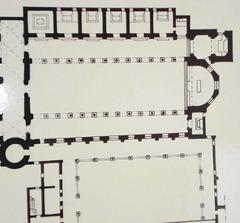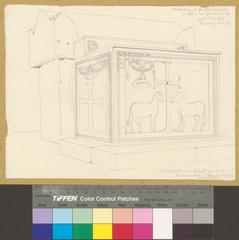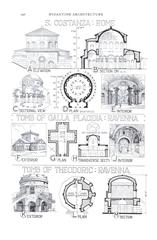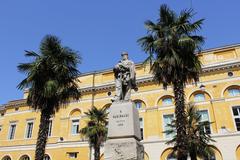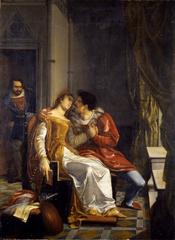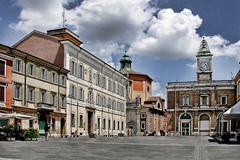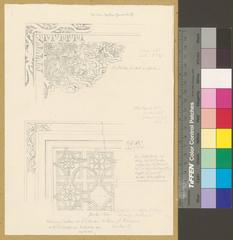Archbishop’s Chapel Ravenna: Visiting Hours, Tickets, and Historical Guide
Date: 14/06/2025
Introduction
Nestled in the historic heart of Ravenna, Italy, the Archbishop’s Chapel—also known as the Cappella Arcivescovile or Chapel of St. Andrew—is a jewel of early Christian art, theology, and history. Constructed in the late 5th to early 6th century under Bishop Peter II, during the reign of Theodoric the Great, this private oratory symbolized Catholic orthodoxy amid a landscape of religious tension between Arian Ostrogothic rulers and the local Catholic community. Today, it is celebrated for its exquisite Byzantine mosaics, intricate architectural design, and profound iconography, all of which assert the divinity of Christ and affirm Orthodox doctrine. As part of Ravenna’s UNESCO World Heritage ensemble, the chapel offers an unparalleled window into the spiritual, political, and artistic currents of late antiquity.
This guide provides detailed historical context, practical advice for visiting—including opening hours, ticketing, and accessibility—and tips to help you make the most of your experience. For the latest updates on tickets and tours, consult the official Archiepiscopal Museum website (ravennamosaici.it), The Byzantine Legacy, and Nomads Travel Guide.
Table of Contents
- Historical Background
- Visiting Information
- Artistic and Religious Significance
- Nearby Attractions and Itineraries
- Frequently Asked Questions (FAQ)
- Conclusion & Visitor Tips
- Sources and Further Reading
Historical Background
Origins and Construction
The Archbishop’s Chapel was built between 494 and 519 CE, commissioned by Bishop Peter II during a period marked by religious tension between the Arian Ostrogothic court and the Catholic population (The Byzantine Legacy). Originally dedicated to Christ, the chapel was later rededicated to Saint Andrew after his relics were brought from Constantinople in the mid-6th century.
Architectural Features
The chapel’s Greek cross plan, barrel-vaulted vestibule, marble-clad walls, and breathtaking mosaics exemplify the highest achievements of late antique Christian art (The Byzantine Legacy). Its compact size reflects its original function as a private oratory for the archbishops, which has helped preserve it in nearly original condition.
Religious and Political Context
Ravenna played a pivotal role in the transition from the Western Roman Empire to Ostrogothic and later Byzantine rule. The chapel’s construction was a powerful symbol of Catholic resilience and identity in the face of Arian dominance, reinforcing Ravenna’s significance as both a religious and administrative center (UNESCO: Early Christian Monuments of Ravenna).
Iconography and Anti-Arian Symbolism
The mosaics assert Orthodox doctrine, depicting Christ as a triumphant, divine figure surrounded by apostles and martyrs. This iconography was a clear theological statement, affirming the consubstantiality of Christ and visually countering Arian teachings (The Byzantine Legacy).
Visiting Information
Opening Hours
- Daily: 9:00 AM – 7:00 PM (last admission at 6:00 PM)
- Note: Check ravennamosaici.it for updates or special closures.
Ticketing
- Admission: Only available via cumulative tickets including several UNESCO sites (Basilica of San Vitale, Mausoleum of Galla Placidia, Neonian Baptistery, Basilica of Sant’Apollinare Nuovo, and the Archbishop’s Museum/Chapel).
- Price (June 2025): €10.50 for adults, €9.50 for children (6–18). Five-site passes are available for an additional €2.
- Purchase: Online or at any participating site. Advance booking is strongly recommended during peak season (Nomads Travel Guide).
Accessibility
- The chapel is on the first floor, accessible primarily via stairs. Elevator access and staff assistance are available for visitors with mobility needs, though some limitations remain due to the building’s historic structure (The Catholic Travel Guide).
- Contact the museum in advance to discuss accommodations.
Guided Tours
- Guided tours in multiple languages and audio guides are available, offering deep insights into the chapel’s history, mosaics, and symbolism (ravennamosaici.it).
- Tours can be booked through local operators or the museum. Group and private options exist; booking ahead is recommended during busy periods.
Facilities and Amenities
- Restrooms and a small gift shop are located within the museum.
- No on-site cafés, but numerous dining options are nearby.
- Lockers and cloakroom facilities are limited; travel light.
Visitor Conduct
- Modest dress is required (shoulders and knees covered).
- Silence and respectful behavior are expected.
- Photography is generally prohibited inside the chapel to protect the mosaics; check signage or ask staff for the latest policy.
Artistic and Religious Significance
Mosaics and Iconography
The chapel’s mosaics are a masterpiece of late antique and early Byzantine art. The barrel vault features lilies, discs, and birds on a gold background. At the apex is a gold Chi-Rho (chrismon) medallion held by four angels, surrounded by the symbols of the Four Evangelists—each holding a gem-studded gospel codex (ravennamosaici.it). The iconography affirms Christ’s divinity and denounces Arian doctrine. The main lunette shows Christ as a victorious warrior, reflecting the religious and political tensions of the era.
Liturgical Use and Legacy
The chapel served as a private oratory for the archbishop and close clergy, underscoring its sacred and exclusive function. The preservation of relics and epigraphs from the Basilica of St. Ursus within its walls further enhances its spiritual significance (medievalmosaics.com).
UNESCO Status
The chapel is one of Ravenna’s eight UNESCO World Heritage sites, recognized for its outstanding universal value in the history of art and theology (UNESCO: Early Christian Monuments of Ravenna). Its intimate scale and rich iconography distinguish it among early Christian monuments.
Nearby Attractions and Suggested Itineraries
The chapel’s central location allows easy access to other UNESCO-listed sites included in the cumulative ticket:
- Basilica of San Vitale
- Mausoleum of Galla Placidia
- Neonian Baptistery
- Basilica of Sant’Apollinare Nuovo
All are within walking distance, making Ravenna ideal for a self-guided or guided walking tour. The city’s historic center also offers lively piazzas, cafés, and shops for a complete cultural experience (Nomads Travel Guide).
Frequently Asked Questions (FAQ)
Q: What are the opening hours?
A: Daily, 9:00 AM–7:00 PM (last entry at 6:00 PM).
Q: How do I buy tickets?
A: Via cumulative tickets covering several UNESCO sites; purchase online or at participating locations.
Q: Is the chapel accessible for visitors with disabilities?
A: Partial accessibility—contact the museum for details.
Q: Is photography allowed?
A: Generally not, to protect the mosaics.
Q: When is the best time to visit?
A: Early mornings or late afternoons on weekdays are less crowded.
Q: How long should I allocate for a visit?
A: 20–30 minutes for the chapel, plus additional time for the museum and other sites.
Conclusion & Visitor Tips
The Archbishop’s Chapel of St. Andrew offers a profound encounter with early Christian art, history, and spirituality. Its mosaics, layered with theological and political meaning, invite contemplation and admiration. To ensure a smooth visit:
- Book tickets online in advance, especially during peak seasons.
- Arrive early or late to avoid crowds.
- Dress modestly and respect the sacred atmosphere.
- Use guided tours or audio guides for deeper understanding.
- Explore nearby UNESCO sites with the cumulative ticket.
For more immersive experiences, consider downloading the Audiala app for expert commentary and interactive maps, and check official resources for the latest updates.
Visual Resources
- High-resolution images of the chapel’s mosaics (with descriptive alt text).
- Interactive maps highlighting UNESCO sites in Ravenna.
Sources and Further Reading
- The Byzantine Legacy
- UNESCO: Early Christian Monuments of Ravenna
- Ravennamosaici.it
- Nomads Travel Guide
- MedievalMosaics.com
- The Catholic Travel Guide
